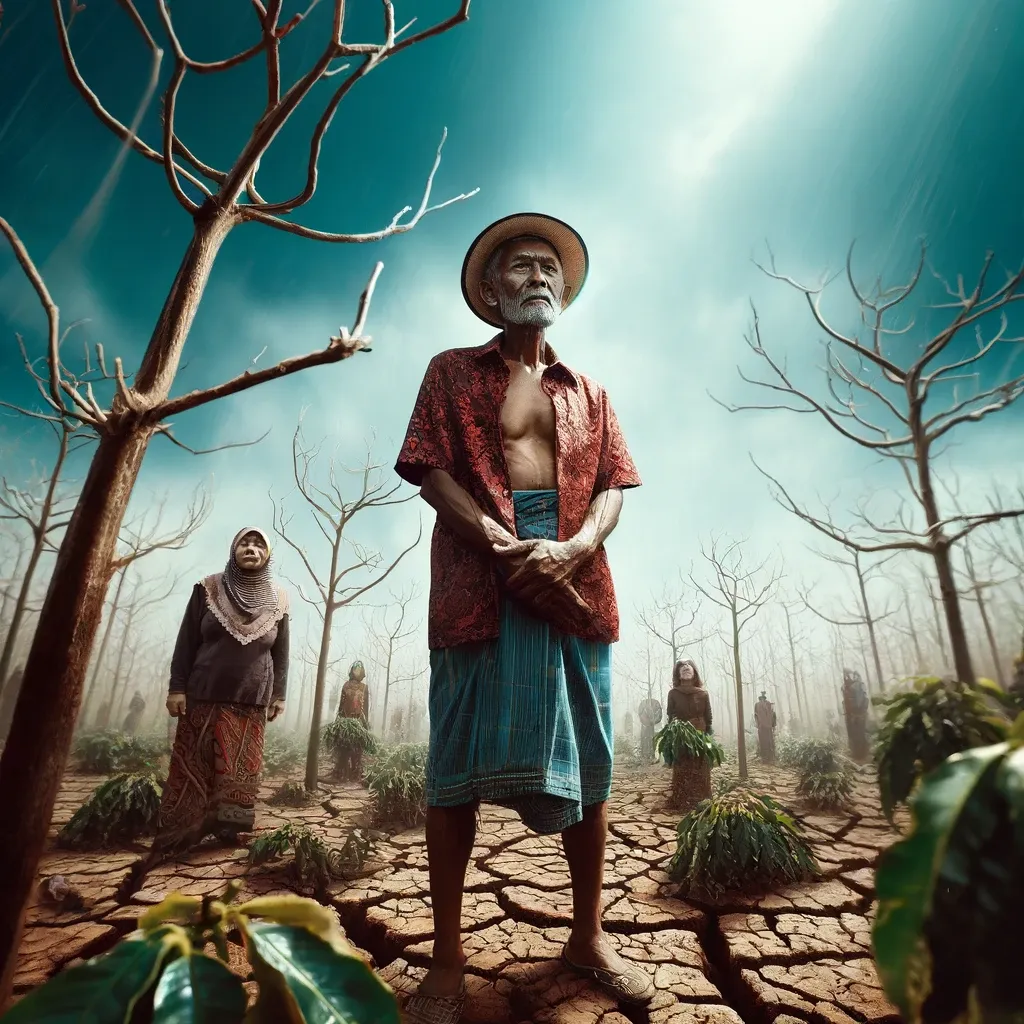Indonesia's coffee crop has suffered due to severe weather conditions.

Indonesia is the world's fourth largest coffee producer after Brazil, Vietnam and Colombia, but farmers in the archipelago are less productive than competitors. In East Java province, harvests have fallen due to prolonged water shortages, which reduce fruit and lead to pests. Total yields are expected to fall by more than 20 percent this season, and increasingly frequent extreme weather events could pose problems for the viability of some small farms in Indonesia's lowlands.
In good weather, the Saturi coffee field rises on a hill in the east of Java Island in Indonesia produces about 2.5 tons of coffee beans per season.
This year, he expects to get less than a ton. "There have been many fires because of the weather," Saturi told Mongabay Indonesia in December at his home in Jember district. Saturi's story mirrors the farmers' distress more widely in the nation's fourth-largest coffee producer, where the weather has changed from heavy rainfall caused by the La Niña climate phenomenon, which lasted from 2020 to 2022, to a severe drought caused last year by el nino. Indonesia's coffee crop this year is forecast to be the lowest in a decade. Jember farmers blame el nino, in which above-normal temperatures in the Pacific Ocean cause dry weather in Southeast Asia. Prolonged rains over long periods of time can easily drown coffee flowers before they produce fruit, and prolonged heat and water shortages usually slow flower growth and allow the tree to wither. Indonesia has recorded a coffee crop of nearly 12 million 60-kilogram bags for the 2022-2023 season, but total production this year is expected to drop to less than 10 million due to el nino, which causes heat waves in low-lying coffee areas. The extreme weather has created problems for a variety of foods around the world. Last year, the price of rice, a staple food in Indonesia, skyrocketed due to supply shortages caused by the drought.
13 May 2025
14 May 2025
Studies have shown that a changing climate could reduce by 21-37% the land available for coffee farming in Indonesia, with similar reductions in other parts of the world. Indonesia is one of the largest agricultural economies in the world, but farmers in this country of 275 million people are already far less productive than neighboring countries like Vietnam, where coffee production is three times higher than in Indonesia. Like many small farmers in Indonesia, Saturi complains that the government does too little to support coffee farmers and that fertilizer is inadequate. "Even if you manage to find it, the price is expensive," he said. This year's coffee crop in Indonesia is forecast to be the lowest in a decade. Jembera farmers blame el nino. Jembera coffee farmers have tried to diversify by planting fast-growing papaya, but the trees are suffering similar fates in the sweltering heat. Pudjianto, an expert at the Indonesian Coffee and Cocoa Research Center (Puslitkoka), said el-nino could have a positive impact on highland growing areas in Sumatra, but the effects could be devastating in forested lowlands prone to heat and drought. "The impact of reduced rainfall will be quite significant on certain fields, especially fields in the lowlands where there is little or no shade," he said, adding that the crop could lose up to a third of its trees this year. Indonesia's national meteorological agency, BMKG, predicts that this year's crop could lose up to one-third of its trees.
Comment
Popular Posts
Popular Offers

Subscribe to the newsletter from Hatamatata.com!
Subscribe to the newsletter from Hatamatata.com!
I agree to the processing of personal data and confidentiality rules of Hatamatata














